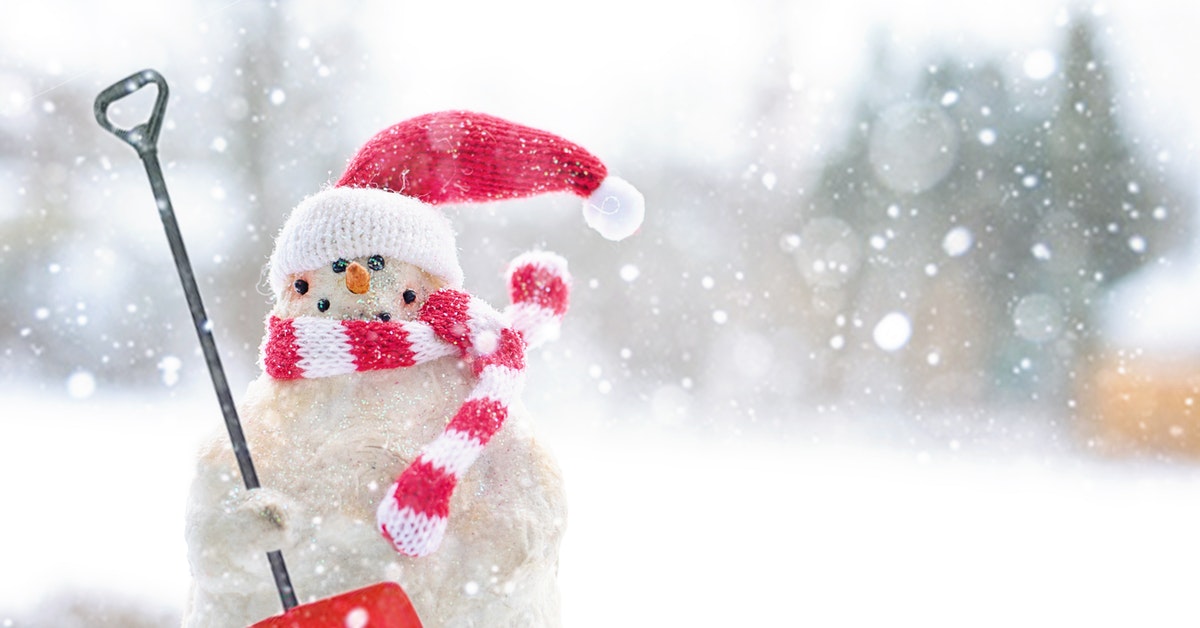February is the snowiest month in many parts of the U.S. No matter what the groundhog sees, we know we aren’t done with winter yet. Whether you are clearing your walks or enjoying an afternoon on the slopes, there are plenty of risks for muscle strains and other injuries.
Here are some common causes of winter injuries and how to prevent them:
Slips and Falls
Slips and falls can happen any time of year, but they are more common during winter months when we have to contend with ice and snow. Ice can be difficult to see during the day and at night. Snow can cover holes in the ground or other tripping hazards, making it easy to fall.
Seniors and children are especially at risk from falls. Head injuries from falls can be serious in people of all ages, but young children are especially likely to hit their heads. Seniors are more likely to experience serious bone breaks in places like the hip, thigh, or spine. Even if you don’t hit the ground, you can strain a muscle or ligament.
No one can completely remove the risk for slips and falls, but there are several things you can do to lessen the risk. Take care to salt all walking areas around your property thoroughly to prevent and melt ice. Wear footwear that is made for snowy weather and has good tread on the sole. You can also attach ice cleats to shoes that don’t have a good tread to make them safer.
You are less likely to fall when walking on ice if you take short slow strides. Rushing around on icy sidewalks is a sure way to cause an accident. Avoid walking through heavy snow cover if you can, especially in places where the terrain may be uneven. Special care should be taken to assist children and seniors when walking over areas that may be slick.
If you experience a fall, you may not feel the full effects right away. Symptoms of muscle strains and mild concussions can show up a day or two after the fall. It’s important to see a doctor right away, even if you don’t think you’ve been hurt. Your chiropractor can treat muscle strains and some other soft tissue injuries. Getting treatment quickly reduces healing time and improves your chance of a full recovery. If there’s any chance that you might have a head injury you should see your medical doctor immediately.
Snow Removal
Snow removal is an unfortunate part of winter for most of us, and while it can be good exercise, it can also lead to injuries. Your neck, shoulders, back, and knees can all take a beating if you don’t use the proper form or if you overwork yourself.
When shoveling snow, use a shovel with a curved ergonomic handle. Keep your neck and back in a neutral position, not bent or arched. If you have bad knees, you may want to consider hiring someone to shovel for you. Bending at the knees reduces strain on your back when you lift a heavy shovel of snow. If your knees ache, this action could cause them to feel worse. Avoiding using your knees because they hurt can lead to a lower back injury.
You might also want to think twice about removing snow if you have a heart condition. Shoveling snow is a known trigger for heart attacks. This is because cold weather can cause arteries to constrict, driving up blood pressure. The physical exertion of shoveling snow is often a shock to the body for people who have been sedentary all winter.
Using a snowblower isn’t a get-out-of-injury-free card. You are still pushing a heavy piece of equipment through snow and walking on slippery ground. You should try to keep your spine in a neutral position while pushing the snowblower, just as you would while shoveling.
Keep in mind that different people will have different safe weight limits, both for lifting snow in a shovel and for pushing a snowblower. If you are petite or not in good shape, aim for a lighter model snowblower and take smaller scoops of snow while shoveling. Regardless of how much weight you are lifting or pushing, correct form is still vital for preventing injury.
Winter Sports
Winter sports can be a great way to lift your mood and keep yourself in shape during cold months. Wearing the right protective equipment can help keep you safe while you enjoy skiing, ice skating, and other winter activities. The most essential piece of protective gear is a helmet. Different sports require different head protection, so make sure you are wearing a helmet designed for your sport. Appropriate clothing to protect you from the cold is also important. Dress in layers and wear breathable fabrics so you can avoid overheating as your activity increases.
Stretching out and warming up are always good steps to help prevent sports injuries. Cold weather makes muscles more susceptible to strain, so warm-ups are even more critical than usual. Try looking online for warm-up routines designed for your sport. Most of these routines can be done with no equipment and are easy to do before you hit the slopes or the rink.
Every year kids are injured while sledding and tobogganing. Though they may not seem dangerous, these activities often lead to head injuries and broken bones. Every child should wear a helmet while participating in these activities. It’s a good idea for adults to wear one too. Coaching kids on safe positioning in the sled, such as never riding a sled headfirst, and keeping hands and legs inside the sled, can help kids stay safe.
If you have strained muscles, back, or neck pain this winter, make sure to get treatment as soon as possible. A licensed chiropractor can take x- rays and provide treatments like adjustments, laser therapy, and home care advice.





